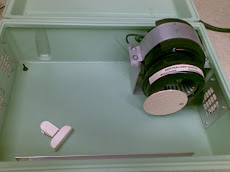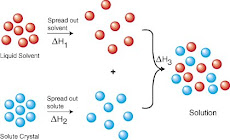Biopolymers: Time to Take A Deep Breath
Materials Know How,
By Michael Sepe from Michael P. Sepe LLC
From: Plastics Technology
Issue: May 2012
Are we looking at all of the implications associated with developing this new 'crop' of polymers?
The author argues that large-scale use of food crops—or land that could be used to cultivate them—to produce biopolymers would raise concerns about global food supplies, water use, and the environmental effects of agriculture. A more sustainable solution, he argues, would be use of inedible plant matter, preferably grown on land not suitable for food production. (Photo: RTP Co.)
The enthusiasm for polymers made from biologically derived materials is understandable. After years of plastics being assailed by environmental groups, the media, and the general public for being “part of the problem” of consumption of fossil fuels, it undoubtedly feels good to be able to point to the growing sector of biopolymers as evidence that the plastics industry is acting in a conscientious and proactive manner. It is consistent with the ethic behind already worn-out terms such as green and sustainable.
This newfound enthusiasm for a sector of the industry that seems to have finally reached critical mass after 35 years of painfully slow and uneven development has given rise to some bold and even outrageous predictions regarding the degree to which biopolymers will replace oil-derived plastics as this century unfolds. One online survey that was posted recently asked a question to the effect of, “How soon will biopolymers displace oil-based polymers as the dominant class of materials used in the plastics industry?” The multiple choice menu contained options like 10 years and 25 years. I checked “Never.”
Never is a long time, but my answer was motivated less by a belief that it can’t happen than by a conviction that it should not happen, at least in its current incarnation.
Deriving propanediol from grains or ethylene from sugar cane may sound like a good idea. However, this is an extension of the strategy that introduced alcohol derived from corn to the motor-fuel industry. This approach has contributed to a substantial increase in the price of food as the supply of staples has been reduced in favor of growing crops for fuel. This has gone largely unnoticed in Europe and the U.S., where the cost of food does not constitute the percentage of the family budget that it does in developing nations.
But it has had a large impact on the ability of large segments of the world’s population to feed itself.
There are some inescapable facts to be confronted about the state of food production in the world today and the growing problem of feeding a rapidly expanding population. And it begins with the fact that approximately 1 billion of the 7 billion inhabitants on the planet already suffer from chronic hunger. This is a conservative estimate; some place the number closer to 2 billion.
Add to this the projection that by 2050 we will add another 2 billion to 3 billion people, and that those already living or yet to be born into countries with rapidly developing economies will consume more food, and the best estimates indicate that world food production will need to double in the next 40 years. It is not entirely clear that this is an attainable objective given the fractured nature of the world political system. However, it is clear that one thing that is not needed to add further to the burden of meeting this objective is diverting large amounts of food crops to production of polymers.
As things stand, only 60% of the food grown today ends up going directly to human consumption. An additional 35% is used for animal feed. It takes 30 lb of grain to make 1 lb of edible, boneless beef. The other 5% already goes to biofuels and other industrial products, including our burgeoning biopolymer sector.
The argument is made that the products grown for animals and industry do not detract from the human food sources since these products are not fit for human consumption.
One night while coping with a bout of severe insomnia, I watched Congressional proceedings on C-Span where testimony to this effect was being given to Congress by representatives of Big Alcohol. But this defense ignores the reality that there is a finite amount of land on which crops can be grown, and if the economic incentives dictate that crops will sell for higher prices when made into biofuels and biopolymers than when made into food, then land will be set aside to do just that.
Market theory would respond to this by using more land to produce all of the needed products. And this brings us to the next issue, the impact that agriculture has had on our environment. Only energy production has had a greater impact on our environment than agriculture. Agriculture is the largest single source of greenhouse gases, accounting for 35% of all the carbon dioxide, methane, and nitrous oxide that we release. This is more than the worldwide emissions from transportation or electricity generation. In addition, agriculture has cleared or significantly transformed large percentages of prehistoric grasslands, savannahs, and temperate and tropical forests.
Finally, fresh water has been part of the collateral damage associated with agriculture. Irrigation has drawn so much volume away from natural waterways that many large rivers, such as the Colorado, have diminished flows or have dried up altogether, and many places have rapidly declining water tables, including regions in the U.S. And where water is not disappearing it is being contaminated. Fertilizers, herbicides, and pesticides are ubiquitous. While fertilizers have been an important ingredient in improved agricultural yields, nearly half of the applied fertilizer runs off and ends up in coastal waters where it impacts fishing grounds, another key element in the cycle of food production. And fish do not require large allotments of grain to be converted into food.
Kermit the Frog had it right: It’s not easy being green. Before we rush to replace petroleum with “renewable resources,” we need to pause, take a breath, and truly understand the impact of siphoning off key resources designed to feed people to make our polymers.
Biopolymers are an inherently good idea. But if this is to be done in a sustainable way, to use the vernacular, we need to make them from the parts of the plant that we do not eat or from crops that can grow in places and under conditions that would not sustain food production and therefore do not compete for those resources. Then we can get down to answering the technological questions regarding where biopolymers fit when it comes to requirements for efficient processing and the properties they offer relative to the incumbents.
martes, 22 de mayo de 2012
IS IT REALLY CORRECT TO USE OUR FOOD SOURCES TO SUBSTITUTE SYNTHETIC MATERIALS OR FUEL ??
domingo, 20 de mayo de 2012
APRENDER SOBRE SAPONINAS
Saponinas:
Las saponinas (del latín sapo, "jabón"), son glucósidos de esteroides o de triterpenoides, llamadas así por sus propiedades semejantes a las del jabón: cada molécula está constituida por un elemento soluble en lípidos (el esteroide o el triterpenoide) y un elemento soluble en agua (el azúcar), y forman una espuma cuando se las agita en agua. Las saponinas son tóxicas, y se cree que su toxicidad proviene de su habilidad para formar complejos con esteroles, por lo que podrían interferir en la asimilación de estos por el sistema digestivo, o romper las membranas de las células tras ser absorbidas hacia la corriente sanguínea. Existe una gran variedad de plantas que contienen Saponinas en distintas concentraciones, como por ejemplo Yucca, Ginseng, Quinoa, Quillay entre otros. Las Saponinas se producen en forma comercial, teniendo múltiples usos: agente emulsionante de grasas y aceites, protector de sustancias coloidales, dentrífico, emulsificador de la industria fotográfica.
Se agrega a las bebidas para obtener espuma y en extinguidores de incendio.
La saponina presenta algunos usos en medicina especialmente en enfermedades respiratorias y dérmicas. Por su semejanza estructural con algunos esteroides, podría participar en la producción de hormonas sintéticas para el control de la natalidad. Se destaca también la acción hemolítica.(Tocal y Rosende, 1986).
Debido a que la mayoria de las saponinas disponibles comercialmente son fabricadas para estos propósitos técnicos,los fabricantes practicamente no discriminan de que plantas ellas provienen. Aplicaciónes de la Saponina
(1) Agroquimicos: El mecanismo funcional de la saponina es en la Tensión superficial. En aplicaciones como un agente humectante para las aplicaciones plaguicidas en polvo. La tasa de suspensión de polvo mojable de plaguicidas pueden alcanzar hasta el 85% a 90% e incluso más del 95%. La saponina podría ser utilizado como sinergista, en la difusión de plaguicidas en emulsión. Podría ser utilizado en el polvo soluble deherbicidas o herbicidas líquidos para mejorar la eficacia. Puede reducir la dosis de herbicidas puros.
La saponina, como un plaguicida biológico, también podría ser utilizado como insecticida, fungicida, nematicida, como agente de limpieza del estanques, acelera el crecimiento del camarón. El insecticida que contiene saponina, mata los gusanos, lombricesnematodos etc.
(2) Molusquicida: Es un molusquicida natural orgánico sin ningún tipo de daño potencial para los humanos, los animales y el medio ambiente.
Se aplicada en los campos de arroz para matar a los caracoles, sobre todo Golden Apple. Se puede garantizar la cosecha y calidad superior de arroz sin elementos nocivos acumulados.
(3) Acuicultura: Pesticida natural es ampliamente utilizado en la acuicultura para eliminar los peces no deseados y los insectos nocivos en los peces y estanques de camarones.
Su contenido es la T.saponina. Ayuda a los camarones a despegar del shell y mejora el crecimiento de los camarones. Desintoxica rápidamente en el agua y no son perjudiciales para el ganado y las personas que pueden usar el agua. No dejan residuos nocivos acumulativos, y es fácil de usar y económico.
En la ganadería, se puede reducir el nivel de colesterol en el interior de los animales y desarrollar productos de bajo contenido de colesterol de los animales.
(4) Alimentación: La T. Saponina para piensos es eficaz y sustituye los antibióticos, puede reducir las enfermedades para los seres humanos y animales y mejora toda la industria de cría acuática.
(5) Construcción: La T. saponina puede ser utilizado como agente espumante y de estabilización de la espuma como agente en la producción de hormigón. Tiene una función especial en los aglomerados de maderas.
(6) Química: La Saponina se puede utilizar para la producción de champú para el lavado de cabello. Tiene buenos efectos en el cabello, la protección, la inflamación, la eliminación de la caspa. La Saponina también se puede utilizar para lavar la ropa y no reduce el color o se encogen y por lo tanto la industria textil no pierde brillo.
Vistas de página en total
GREEN CHEMICALS
Also the materials have to meet with toxicity and health requirements regarding inhalation, dermal and eye contact. There is also a specific list of materials that are prohibited or restricted from formulations, like ozone-depleting compounds and alkylphenol ethoxylates amongst others. Please go to http://www.greenseal.com/ for complete information on their requirements.
For information on current issues regarding green chemicals, see the blog from the Journalist Doris De Guzman, in the ICIS at: http://www.icis.com/blogs/green-chemicals/.
Certification is an important — and confusing — aspect of green cleaning. Third-party certification is available for products that meet standards set by Green Seal, EcoLogo, Energy Star, the Carpet & Rug Institute and others.
Manufacturers can also hire independent labs to determine whether a product is environmentally preferable and then place the manufacturer’s own eco-logo on the product; this is called self-certification. Finally, some manufacturers label a product with words like “sustainable,” “green,” or “earth friendly” without any third-party verification.
“The fact that there is not a single authoritative standard to go by adds to the confusion,” says Steven L. Mack M.Ed., director of buildings and grounds service for Ohio University, Athens, Ohio.
In www.happi.com of June 2008 edition, there is a report of Natural formulating markets that also emphasises the fact that registration of "green formulas" is very confused at present, due to lack of direction and unification of criteria and that some governmental instittion (in my opinion the EPA) should take part in this very important issue.










































